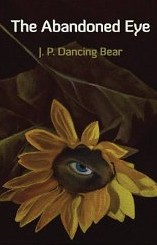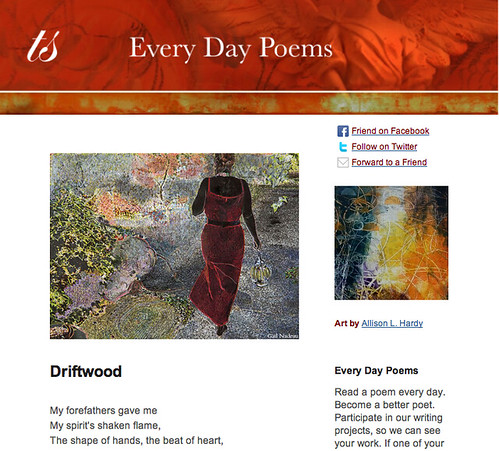Reading the poems of The Abandoned Eye by J. P. Dancing Bear makes me think of razor blades.
The words of the poems and the poems themselves cut like sharp knives against the skin. They embody a pointed edge, tearing at convention to be sure but also tearing away of our conceptions of relationships, events, and everyday life.
A baseball game is a baseball game, until hunger steps up to the plate (and the double meaning of “plate” is useful here).
A tree seems just a tree, until you begin to deconstruct it by its rings of age, its squirrel holes, its imperfections.
A pond seems just a pond, until it becomes a metaphor for a graveyard, and a grave.
It’s not dead whales that wash up on a beach, but 30 dead bees.
And let’s reduce the creation story into a narrative of control, or what we think we can control:
We started in our paper boats,
ambitious as maps.
We were minutes and hours,
our longitudes spreading tendrils
beyond the boundaries of the key.
We saw the world as something
waiting for us,
but that was just our expectations
pinpointing to particular coordinates.
We reduced the planet
to a scaled globe
smaller than a human heart.
Dancing Bear uses free verse and prose poems to tell these rather unsettling stories. And if there is a common theme to the poems, it is precisely this idea of the unexpected and the disconcerting doing what poetry is often singularly equipped to do – challenge our notions of the conventional in a succinct, concise way.
In “Knot, ” he combines images of a tree in autumn with its fallen leaves into a metaphor for love, and perhaps a lost love:
Knot
Even as the last red tongues of our tree
cling to a colder life, I see your bones
among the naked branches
where even my smallest prayer
falls to mulch.
I entwine my limbs into silent knots
with yours, and think not of death,
but what I can remember
of your body—its shape and fragrance,
the hunger it generates
within me. And yes,
my tears have watered this tree,
for what else is there
but to nurture what memory provides.
Dancing Bear is editor of the online publication The American Poetry Journal. His poems have been published in such literary journals as Shenandoah, Mississippi Review, North America Review, Seattle Review, and Poetry International (most of the poems in this collection were previously published). He’s the author of five poetry collections, including The Abandoned Eye and six chapbooks.
In this collection, his words and his poems cut like razor blades. Rare it is to find poets and poems like this poet and these poems. The poems shave close to the surface, removing what we often use to hide and deliberately obscure. In less skillful hands, they would gash and cut. Here, they remove and lay bare. These poems are unsettling, but collectively they are also brilliant.
Image by Claire Burge. Sourced via Flickr. Post by Glynn Young, author of the novels Dancing Priest and A Light Shining, and the just-published Poetry at Work (T. S. Poetry Press).
__________________
Want to brighten your morning coffee?
Subscribe to Every Day Poems and find some beauty in your inbox.
- Poets and Poems: Donna Vorreyer and “Unrivered” - October 7, 2025
- Poet Sidney Lanier and the Lost Cause - October 2, 2025
- Poets and Poems: A.J. Thibault and “We Lack a Word” - September 30, 2025


Maureen Doallas says
He’s a remarkable poet. The images can be searing and the voice so lyrical.
SimplyDarlene says
Your last paragraph reads like poetry, Glynn.
Dolly@Soulstops says
Thanks, Glynn, for introducing me to this poet.